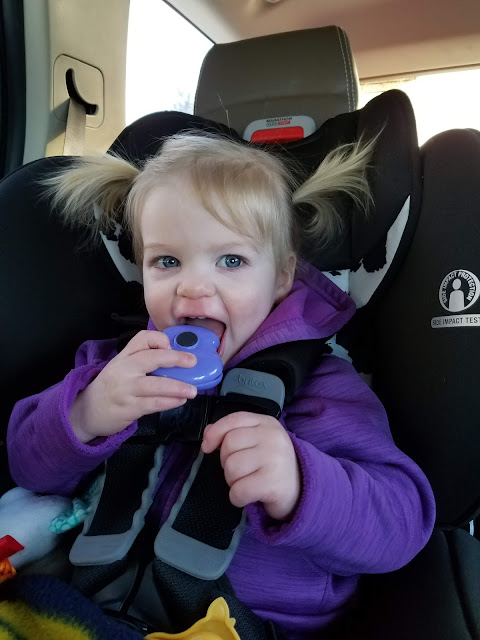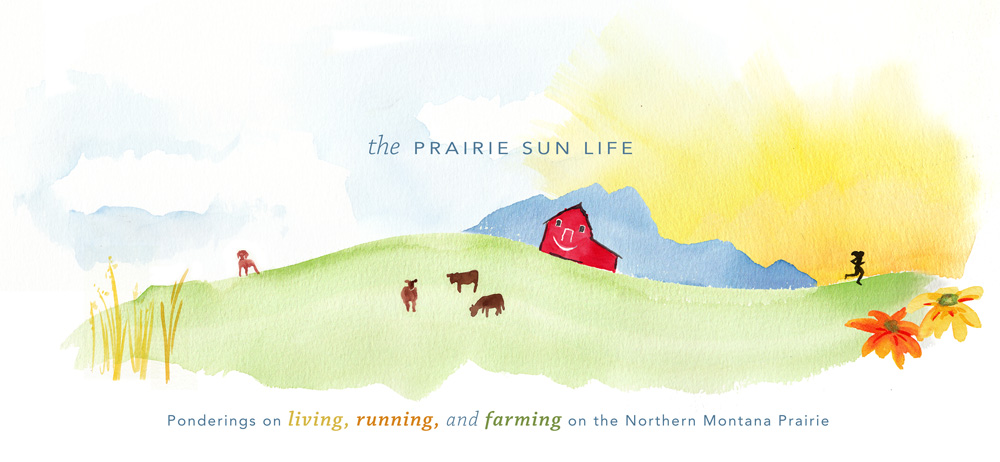Today I have a special guest blog post from my husband Jeff! As I've mentioned in my weekly reviews, he is now on the Board of Directors for Montana Farmers Union, and is working on MFU's legislative efforts for the current Montana session. One of the issues he's become particularly endeared to is Country of Origin Labeling, or COOL, especially as it pertains to beef. Jeff is actually headed to Helena today to lobby and testify on behalf of Montana ranchers, in favor of better labeling for our beef. Please read on for more information!
Hi folks,
this will be either a rare treat or a fiasco, as I attempt a guest blog for the
first time. I know Katie has built a substantial and discerning readership, so
I’ll do my best to live up to that!
As you no
doubt know from reading this blog over the years, we’re cattle producers in
addition to being grain farmers. We are proud of the way our animals are
raised, and proud of the product they ultimately turn out to be: US Beef. Born,
Raised, and Processed in the United States.
As you also
may remember, Katie and I have been active members of Montana Farmers Union for
the last 7 or 8 years. One of the issues we became most engaged with, due to
our pride as Montana cattle producers, is Country-Of-Origin Labeling of meat
products. National Farmers Union fought alongside several other industry groups
for years to label meat, both to give
consumers a choice in what they purchased at the meat counter, and to aid US
producers, because when given the choice, consumers in this country will buy US
Beef and not think twice.
However, the meat packing industry has always fought
against COOL, stating basically that consumers didn’t really NEED to know what
country their meat came from, and that it was just too hard to keep all those
animals separate anyway, and we should just forget the whole thing. Quite a
bunch of nonsense, but nonsense backed by a ton of lobbying clout and $$$$.
We finally prevailed, and we had national COOL as law in 2013, 2014,
and 2015, but other countries were battling the law at the World Trade
Organization (WTO), on the grounds that our product being labeled and
differentiated from theirs was negatively impacting their producers, violating
the provisions of various free trade agreements. The law was tweaked twice and
re-submitted to the WTO, but in 2015 Congress decided to give up on that fight
and repealed COOL.
Here’s the
thing, though: Those meat packing companies, the ones who always said COOL was an
impossible, over-bearing regulation, never
stopped labeling meat when the law was repealed! But, the law was gone, and
replaced by a Food Safety Information Service rule. That rule says basically:
Any meat product that comes into a USDA-inspected processing facility and
undergoes a change in its structure can be labeled “Product of the USA.” Key
word: any. A box of side of beef cutouts from Brazil, Australia, Mexico, or
anywhere else can come into the country, be processed into your chuck roasts,
rib steaks, sirloins, etc., and be labeled “Product of the USA.” They’ve taken
all the work that those of us in the industry did on behalf of US producers and
consumers, and basically turned it into a method to mislead consumers. Why?
$$$.
So, you ask,
what can be done? Several states have tried to create state-level COOL, by
passing laws that require a placard in the grocery store to accurately describe
a meat product’s origin, either by saying Product of the USA, or Country of
Origin Unknown, processed in the USA (or some variation of that language). This
year, there are a couple of attempts to create a law like this in Montana, and
MFU is monitoring them closely, so stay tuned.
So why is it
important? Well, for one, consumers want to know what they’re buying and
eating, and the current rule is an active impediment to that pursuit. Certainly
most beef consumed in this country is domestically produced, but that’s the
point, isn’t it? You, Joe and Jane Consumer, want to know what you’re getting, and you currently don’t know.
Second, the
beef industry is consolidating and globalizing to the point where producers are
at risk of losing their independence, and their ability to discover a fair
price for their product. The US hog and chicken industries are basically run by
the meat-packing industry, with no competitive marketing available to producers
even if they want any. The largest meat company in the world, JBS, is now
Brazilian-owned. You can see how this system could lead both to producers being
squeezed into a system of dependence on the packers, and to consumers being
sold product which has no verifiable information about where it may have come
from.
Whew, that
was long. I guess that’s why she keeps me away from here most of the time! I
hope you learned a little something, anyway, and that it kept your interest.
Thanks for reading, talk to you again sometime!
Wow! Thanks Jeff for that super informative post! I hope everyone learned something. What can you do as an individual consumer who cares about where their meat and food comes from?
- Buy and eat locally, especially in places that work with local and small scale producers.
- Get to know some farmers. You may be able to purchase beef or other food directly from them. If nothing else, you'll learn a whole lot more about food production!
- Join farm/food advocacy groups, such as Montana Farmers Union. You don't have to be a farmer to care about where your food comes from and groups like MFU are working to keep farmers on the farm and keep good information in the hands of consumers.
- Contact your local representative and let them know your thoughts on COOL or any other issues you may have a "beef" with! (See what I did there?!?! haha!)
 |
| Product of the USA! (Or should we say Siberia?!?!) |









